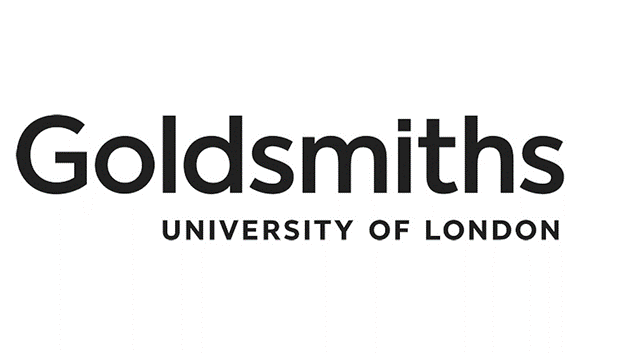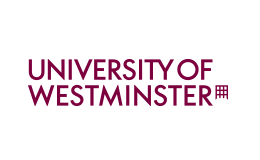Visual Culture: Exploring the World Through Images
Visual Culture is an exciting interdisciplinary field that examines how visual images, media, and representations shape our understanding of the world. From ancient art to modern digital media, this course delves into the power of visuals in influencing society, identity, politics, and everyday life. For Indian students dreaming of studying abroad, Visual Culture offers a unique lens to analyze global cultures while connecting back to India's rich visual heritage—think Bollywood films, street art in Mumbai, or the intricate motifs in traditional textiles.
In today's image-saturated world, where social media, advertising, and visual storytelling dominate, studying Visual Culture equips you with critical thinking skills to decode these influences. Whether you're passionate about art, design, film, or cultural studies, this course bridges theory and practice, preparing you for creative and analytical careers in a globalized economy.
Why Choose Visual Culture Abroad?
Studying Visual Culture internationally exposes you to diverse perspectives that aren't always accessible in India. Imagine analyzing Renaissance paintings in Italy or contemporary street art in New York—experiences that enrich your worldview and enhance your resume for multinational opportunities. For Indian students, this field is particularly relevant as it helps navigate cultural hybrids like global pop culture's impact on Indian youth or the rise of digital visuals in e-commerce.
Abroad, programs emphasize hands-on learning, such as museum visits, media labs, and collaborations with international artists. This not only boosts your employability but also fosters cross-cultural communication skills, vital in India's growing creative industries valued at over $200 billion.
Course Overview
Visual Culture courses typically span 3-4 years for a bachelor's degree or 1-2 years for a master's, depending on the university. The curriculum combines lectures, seminars, fieldwork, and independent research, encouraging you to explore how visuals construct meaning across contexts.
Key Learning Outcomes:
- Develop a critical understanding of visual media's role in society and history.
- Analyze images from various cultures, including non-Western perspectives relevant to India.
- Gain skills in visual research, critique, and production using digital tools.
- Explore ethical issues like representation, appropriation, and visual activism.
- Prepare for interdisciplinary careers by integrating art, media, and cultural theory.
Most programs require no prior art background, making it accessible for students from humanities, social sciences, or even STEM fields interested in creative applications.
Detailed Curriculum
The curriculum is modular, allowing flexibility to specialize in areas like film studies, digital culture, or global visual histories. Below is a sample structure for a typical bachelor's program, which can vary by university.
| Year/Semester | Core Modules | Topics Covered | Assessment |
|---|---|---|---|
| Year 1: Foundations | Introduction to Visual Culture | History of images from cave paintings to photography; basic theories of seeing and representation. | Essays, quizzes, group discussions. |
| Visual Methods | Research techniques: analyzing ads, films, and social media visuals. | Practical projects, presentations. | |
| Year 2: Contexts | Global Visual Histories | Colonialism's impact on visuals; Indian miniature paintings vs. Western art; postcolonial theory. | Case studies, midterm exams. |
| Media and Society | Advertising, propaganda, and digital memes; how visuals shape public opinion. | Media analysis portfolio. | |
| Year 3: Advanced Topics | Digital Visual Culture | Social media, VR/AR, and AI-generated images; ethics in the digital age. | Research paper, digital exhibit. |
| Visual Activism | Protest art, feminist visuals, and cultural resistance; examples from India's social movements. | Group project, reflective essay. | |
| Year 4: Specialization/Capstone | Dissertation or Internship | Independent research on a topic like Bollywood's global influence or urban visuals in megacities. | Thesis, internship report. |
For master's programs, the focus shifts to advanced theory and research, often including electives like Visual Anthropology or Screen Studies. Indian students can tailor projects to compare Eastern and Western visual traditions, adding a unique edge to their work.
Skills You'll Develop
Visual Culture isn't just about theory—it's about building practical, transferable skills for the modern job market.
- Critical Analysis: Interpreting complex visuals and narratives.
- Creative Production: Using software like Adobe Suite or digital storytelling tools.
- Research and Writing: Conducting visual ethnography and academic writing.
- Intercultural Competence: Understanding diverse visual languages, beneficial for India's multicultural society.
- Communication: Presenting ideas through visuals, essential for marketing and media roles.
These skills align with India's booming sectors like digital media (projected to reach $50 billion by 2025) and creative arts.
Career Opportunities
Graduates of Visual Culture programs are in high demand across creative, media, and cultural industries. For Indian students, this degree opens doors to global roles while leveraging India's vibrant creative scene.
Popular Career Paths:
- Museum Curator or Gallery Manager: Curating exhibits on global and Indian art; starting salary abroad: $40,000–$60,000.
- Media Analyst or Content Strategist: Working for agencies like Ogilvy or digital platforms; in India, roles at Flipkart or Zomato.
- Film and Visual Critic/Journalist: Reviewing for outlets like The Guardian or Indian publications like Scroll.in.
- Digital Media Specialist: In UX/UI design, social media marketing, or NFT curation; high growth in India's tech hubs.
- Academic or Researcher: Pursuing PhDs for teaching roles; opportunities in universities like JNU or abroad.
- Non-Profit/Cultural Policy: Working with UNESCO or Indian NGOs on heritage preservation.
Many alumni return to India for roles in Bollywood production houses, advertising firms, or startups, blending international insights with local contexts. Employability rates for such graduates exceed 85%, with many securing internships during studies.
Top Universities Offering Visual Culture
Choosing the right university can make all the difference. Here's a selection of renowned institutions popular among Indian students, known for their strong Visual Culture programs and support for international applicants.
| University | Location | Program Highlights | Tuition (per year, approx. for internationals) |
|---|---|---|---|
| Goldsmiths, University of London | UK | Focus on contemporary and digital visuals; strong Indian student community. | £18,000–£22,000 |
| New York University (NYU) | USA | Interdisciplinary with film and media; access to MoMA and galleries. | $50,000–$60,000 |
| University of Toronto | Canada | Emphasis on multicultural visuals; scholarships for Indian students. | CAD 40,000–50,000 |
| University of Melbourne | Australia | Global indigenous art focus; post-study work visa options. | AUD 40,000–45,000 |
| Leiden University | Netherlands | Art history and visual anthropology; affordable EU living. | €15,000–€20,000 |
These universities offer scholarships like Chevening (UK) or Fulbright (USA), reducing costs for meritorious Indian students.
Admission Requirements for Indian Students
Getting admitted is straightforward with preparation. Typical requirements include:
- Academic Qualifications: 10+2 with 60%+ for bachelor's; bachelor's degree with 55%+ for master's (from recognized Indian boards/universities).
- English Proficiency: IELTS 6.5+ or TOEFL 90+; some waive for Indian English-medium students.
- Portfolio/Statement: Submit a personal statement on your interest in visuals; optional portfolio for creative backgrounds.
- Entrance Exams: GRE for some US programs; not mandatory elsewhere.
- Visa and Funds: Proof of finances (e.g., ₹10-15 lakhs for first year); student visa guidance available through the website.
Deadlines are usually December–March; start early for scholarships. Our study abroad counselors can assist with applications.
Embark on Your Visual Journey
Visual Culture is more than a course—it's a gateway to understanding how images define our realities. For Indian students, studying abroad in this field means gaining global expertise while celebrating your cultural roots. With endless career possibilities and personal growth, now is the time to envision your future through a visual lens. Explore programs today and step into a world of creativity and insight!




